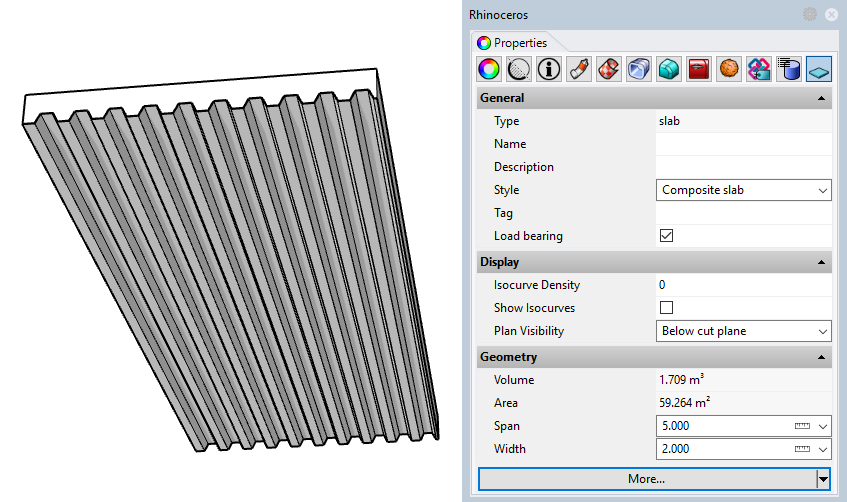Slab Grasshopper Styles Tutorial

In this tutorial a parametric slab style from a Grasshopper definition will be created.
The Slab Grasshopper Styles are currently quite limited because they are inserted by one point and the only way to control the shape of its perimeter is from their input parameters, which means that it is not possible yet to define it from curves or from several points. This is planned to be improved in VisualARQ 3 version.
The 3 main steps to follow are the same as in any other Grasshopper style:
- Grasshopper definition setup
- Create the VisualARQ slab style
- Insert and edit a VisualARQ slab created from a Grasshopper style
1. Grasshopper definition setup
You can download the complete Grasshopper file clicking here.
Type Grasshopper in the Rhino Command line to launch Grasshopper.
-
Input parameters components:
They are the values that will define the features of the resulting slab style. In this example all of them are number sliders. The different kinds of inputs are:
- Number Slider (floating point): A total of 8 sliders have been used for the various dimensions of the slab.
-
Output components:
They are the “ending” components. They need to be Geometry Params that are no further connected to any other components. They will be read by VisualARQ as the different parts of the slab style. In this case there are two brep components, one for the concrete and one for the metal sheet.
The complete Grasshopper definition is shown in the image below:
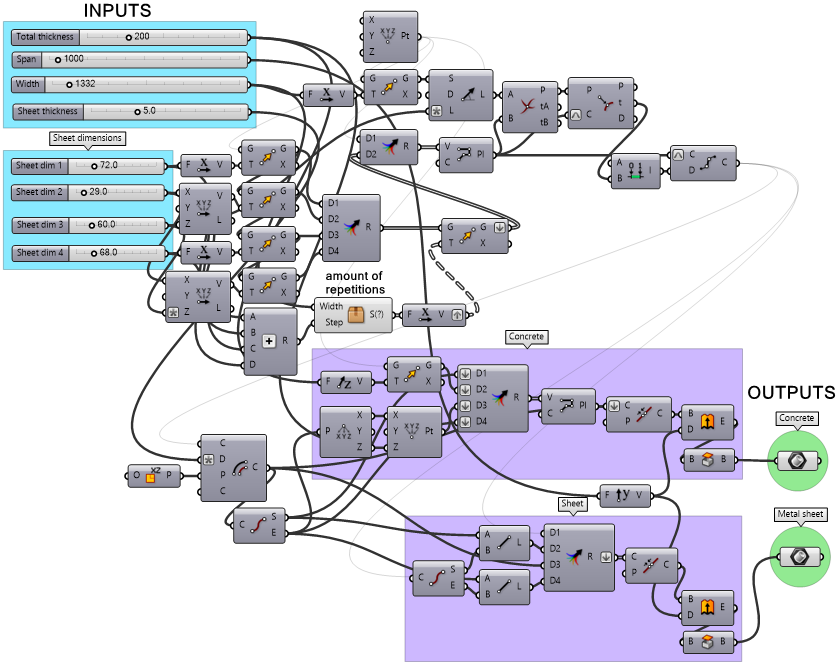
The Grasshopper definition that generates the slab.
2. Create the VisualARQ slab style
In this case the Grasshopper style will be created and managed from the Slab Styles Properties dialog.
2.1: Create the new style
Assuming the Grasshopper definition (.gh file) is already done, open the stair styles dialog: _vaSlabStyles.
Click on the New… button and select the Grasshopper style option.
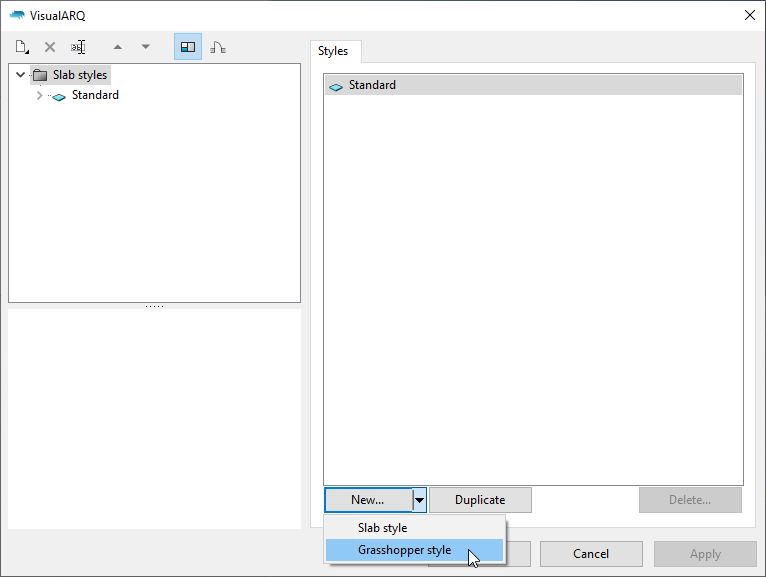
The Grasshopper Style wizard will appear. This wizard will guide you through the steps to define the slab Grasshopper style parameters. The left side of the wizard will show a preview of the object style generated as soon as the required information is completed.
2.2: Open the Grasshopper definition
Click on the Browse button to select the .gh file created before.
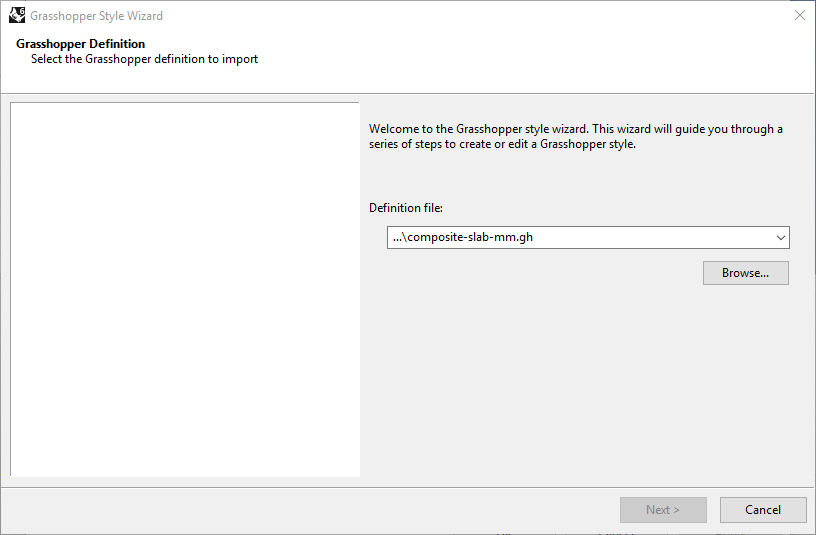
2.3: Configuration
Set the Slab Grasshopper style global values:
- Style name: set the desired name.
- Definition units: in this case the Grasshopper definition was created in millimeters.
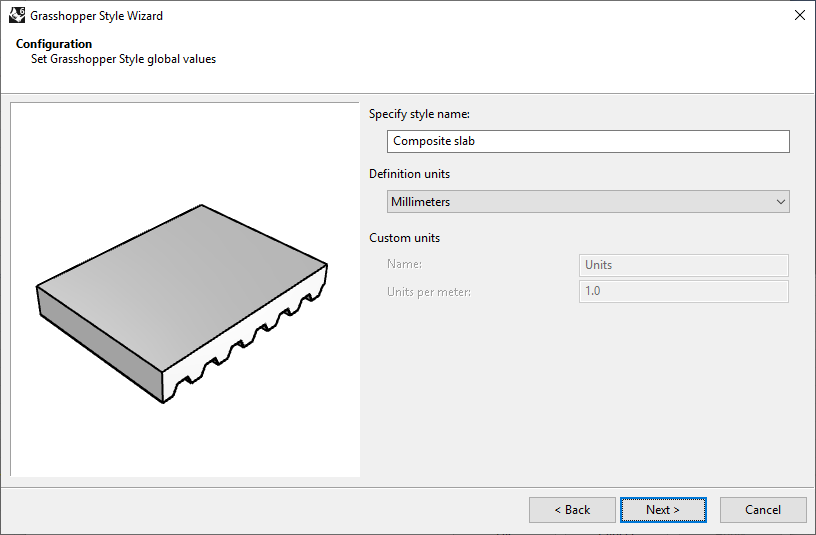
2.4: Geometry
Specify which one of the geometry blocks to import into VisualARQ. The identifiers of these Geometry blocks are taken from the names of the output components in the Grasshopper definition and can be modified only once the style has been created.
Each component can be assigned to a different representation:
- Model: the object representation in 3D.
- Plan: the object representation in plan view. Only visible when the Cut Plane of the level where the object is placed is enabled and intersects the element.
In this case there are two brep outputs that correspond to the Model representation. The Plan representation will be taken from the horizontal section of the 3D elements according to the level’s cut plane height.
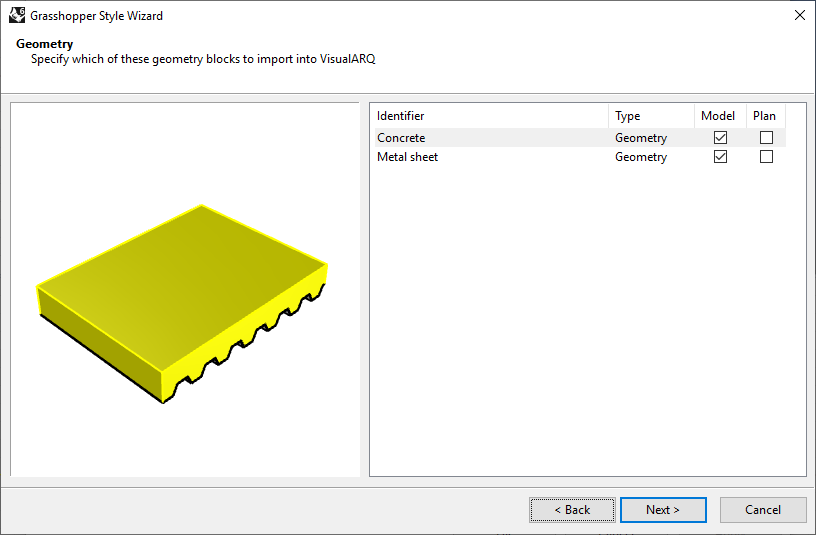
2.5: Parameters
This step shows the settings available for the list of input parameters that define the slab style. The “Filter by” dropdown can be used to view individually each of the named groups of input parameters that were created in the Grasshopper file. The settings available for each of the inputs are:
Name: is the identifier of the parameter and can be modified if desired in this step.
Editable by:
- Definition: the parameter will be hidden in the VisualARQ style and properties dialog.
- Style: the parameter can be edited by style, so the changes will apply to all elements with that style.
- Object: the parameter can be edited separately for each instance of the slab and in case no value is provided by object the one defined by style will be used. In this example only the two inputs that define the main dimensions of the slab (Span and Width) will be set by object.
You can change the settings of different parameters at once by selecting them while holding the Ctrl key.
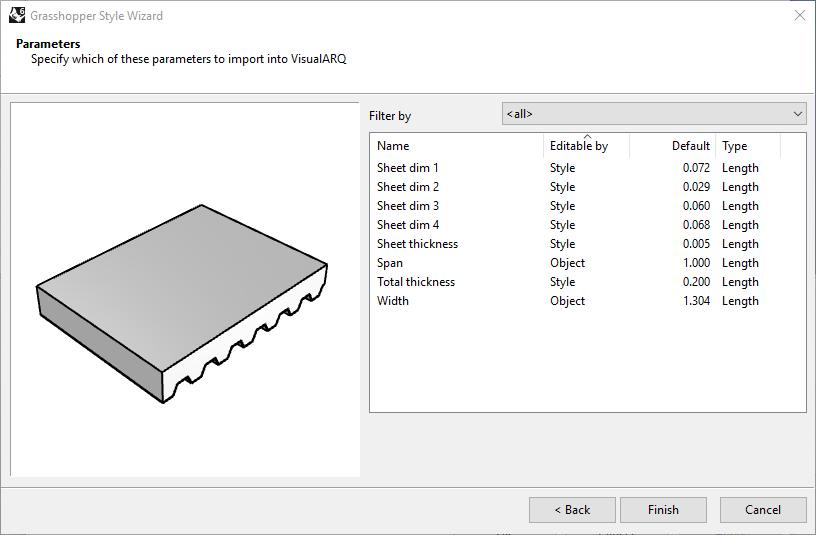
Default (value): shows the default value for the parameters (the ones specified in the Grasshopper definition) and lets you set different default values.
Type: shows the different types of values available for each kind of parameter. In this case all of them are floating point values that automatically have been set to Length.
3. Insert and edit a VisualARQ slab created from the Grasshopper Stair Style
3.1 Edit the slab style
Once the Grasshopper style wizard is completed, the new style will appear in the slab styles list with its corresponding sub-components (Concrete and Metal sheet). To edit the style again, right-click on the style name to open the context menu and select Edit. This operation will open the Grasshopper style wizard again. The parameters are available under the “Parameters” tab and appear grouped as in the Grasshopper definition. In case the name of the group matches an existing category they will appear combined.
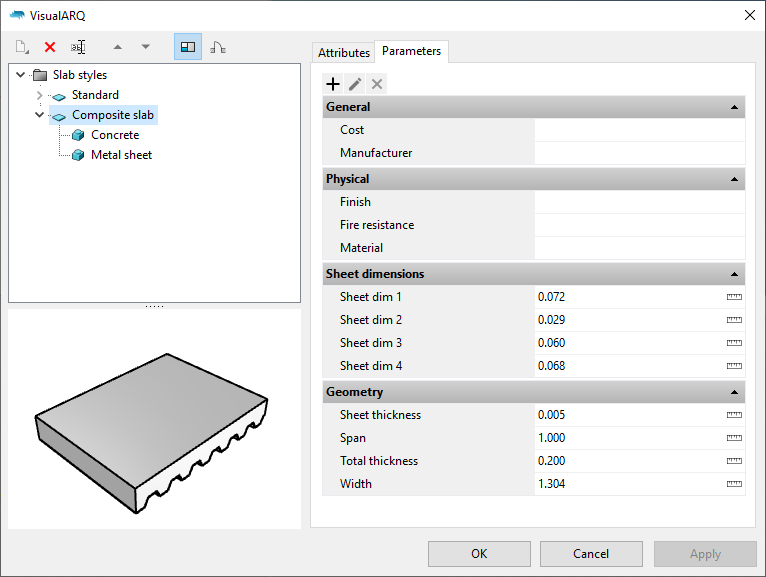
3.2 Insert the Grasshopper style
Once the slab style has been created, you will be able to insert an instance in the document. You will be able to change the values of its parameters from the VisualARQ slab icon located under the Properties panel. Only those input parameters that were set as editable “by Object” in the step 2.5 will be visible.
